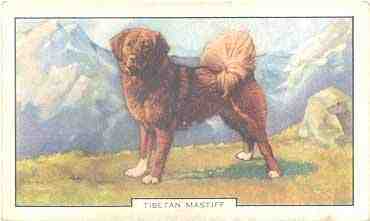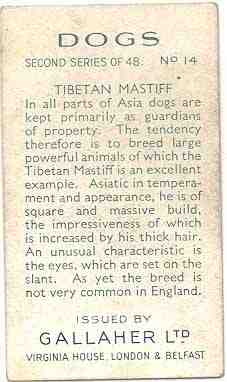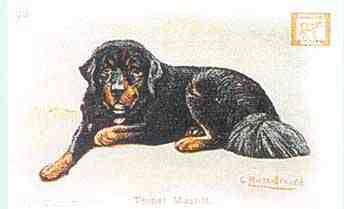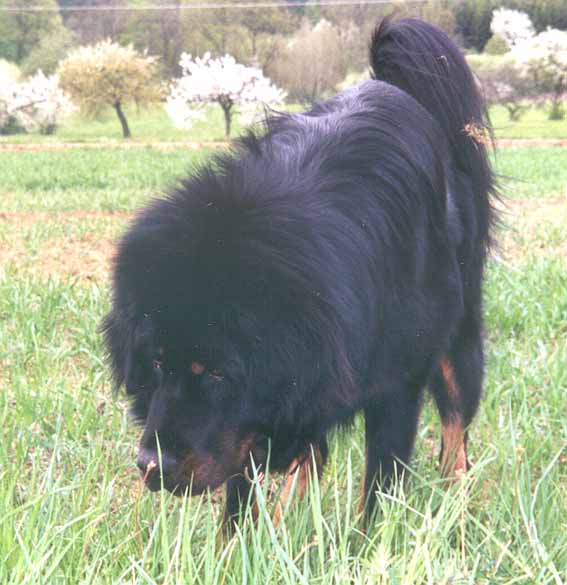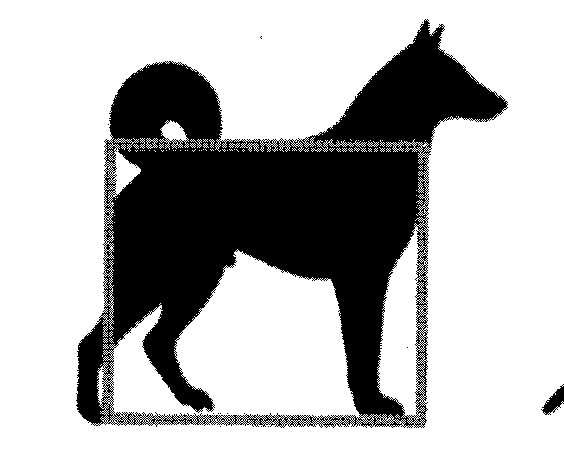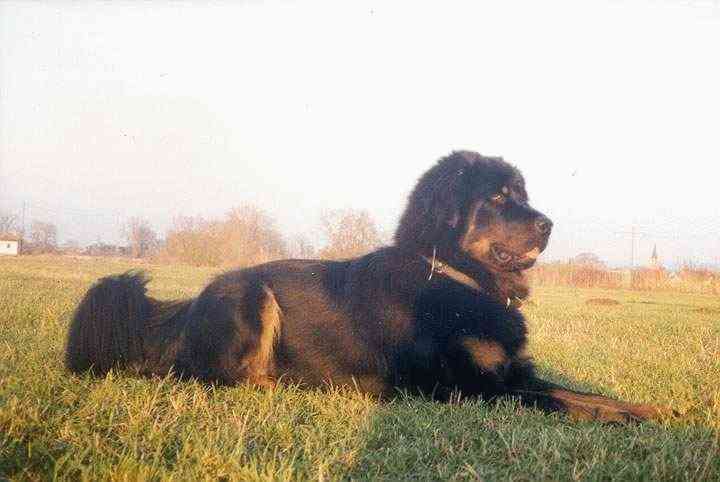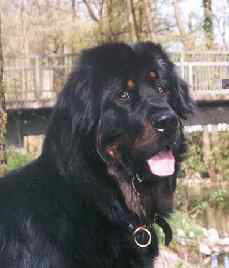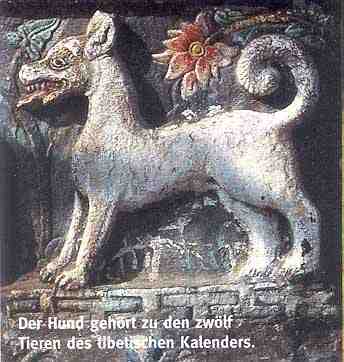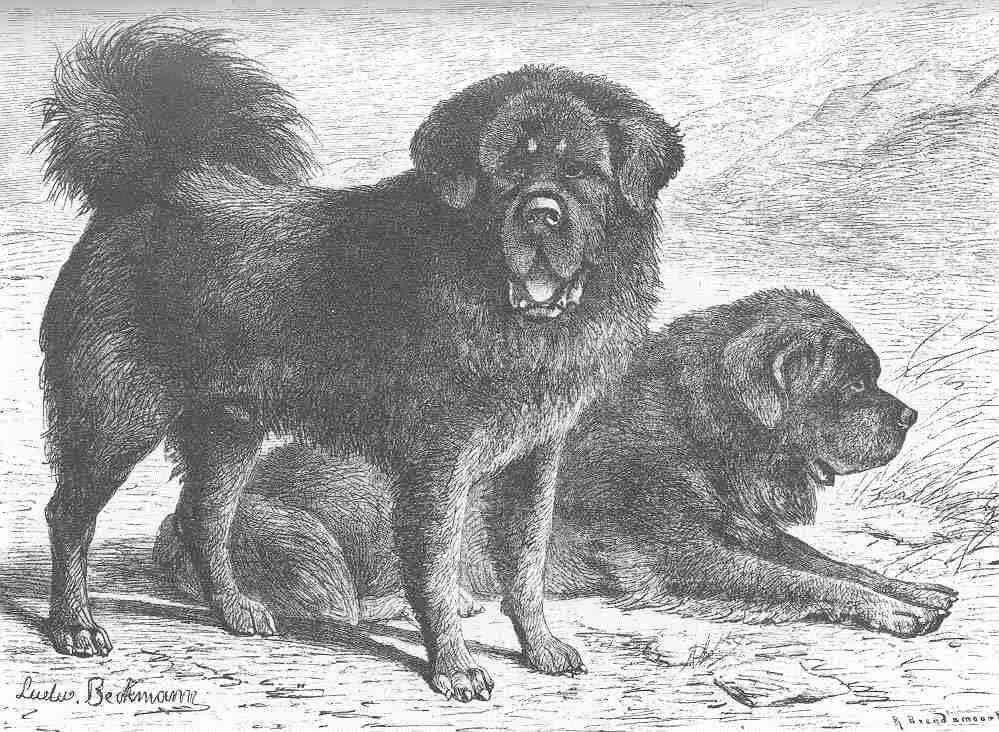 |
The
Do Khyi or Tibet Mastiff Appearance and physique "The type of status" |
|
The appearance of the Do Khyi is also today still coined/shaped by different types, probably developed by the breed with isolates occurring blood lines in remote, inaccessible regions of Tibet. In addition, it is conceivable that after the needs of the herdsman, after targeted application and also after the requirements by the quite very different area, this in its extents enormous country, in the construction lighter and heavier types were bred. |
|
| This
breed was called already around 1900 of the cynologists a land impact, land
impacts is characterised world-wide by a large variability in the
appearance, shows however large agreement in the appearance and nature as
also in the use within the respective race. Surely the breeding was certain also in Tibet by the usefulness of the dogs. Everything, not survivable, was selected by the inexorable forces of nature. A selection took place nevertheless by humans regarding size and strength of the breed. Certain colours due
to the faith, in addition, but faith there by preference was surely given to
the Tibetan population. Likewise the condition of the hair dress might have
quite be independent on the respective, different climatic conditions.
In all colours of
black with white chest asterisk over black and tan with white asterisk, tan
can be rather dark to sand colours, the badges differ here clearly in the
propagation. Likewise one sees grey, grey and tan, also brown and sable as
well as gold to red-coloured Do Khyi can occur. Regarding the colours there
are low restrictions to receive around the race health. The occurrence of
the white badges is only controlled, also here in accordance with the former
conceptions of the people of Tibet.
One can determine the same variability in the hair
dress; from quite short over normal stick hair up to the long stick hair
almost all versions occur. Is likewise possible “Apso ", this means long
hair. |
 November 99 - Winterfur
November 99 - Winterfur |
 Apso?
Apso? |
|
|
Compared with many other
races is noticeable in the construction of the building that the Do Khyi
seems to be almost square, yet is somewhat longer it than high. This
construction increases the mobility of the dog. The back is straight and the
croup only one idea dropping. The tail set rather highly. Source of picture: H.Raeber " of the wolf to the dog" |
| The
front legs are straight, only the front pastern something diagonal. The lay
of shoulder are reset well and lying close, likewise are the elbows lying
close and fixed the hindquarters being also even and parallel, whereby the
branch joint is rather deep. The DO Khyi is well bent, whereby however no
overemphasis of the bending is to be determined. The building of the
Do Khyi is also today still likewise muscled strong and fixed. This dog
seems to be made almost for the application in the difficult area, the
branch strength is enormous also in practice. In the motion this
very strong, bone-strong dog shows a springy, effortless course. With faster
pace it is inclined or to ties. Is called that he anticipates with the rear
spar and far and sets the paw exactly into the footprint of the first
option. From the front we saw an almost cat-like course. As with a cat its
spinal column is just as mobile to be able itself to move this avowedly
perhaps its characteristic almost noiseless. The thorax reaches up to the elbow joints and is rather deeply, hart-shaped. The sagging loins not strongly drawn up. |
|
The heading is rather broadly, with difficulty and strong, the head section in approximately just as long as the lip section with pronounced stop and clear occipital protuberance. The foreface should be not pointedly but rather broadly, square and well up-padded. The heading should not work altogether however squarely. The ears are set not too low and form, if they are raised with the heading an approximately even line.
The
Do Khyi is thus well more designed, muscular and healthy dog mobile despite
the size a reasonably structured, that quite still is able that begin a way
back after to Tibet and with all discussions over the easier or heavier
type, should this efficiency not be lost. |
|
|
|
|
![]()
